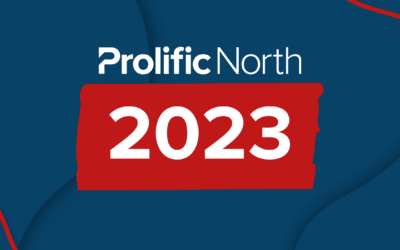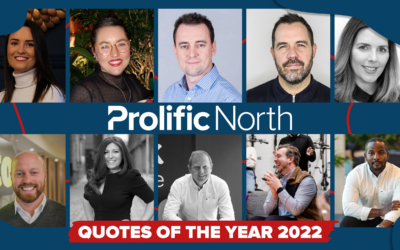Social is constantly evolving and 2023 will be no different as brands clamour to stay ahead of the curve and remain relevant. We caught up with Luke Taylor, joint head of LIVE at McCann Manchester, to gather his thoughts on what’s going to be big in social media next year.
Social is the new search
Outside China, Gen Z now use Instagram as much as they use Google with millennials not far behind. In fact, the number of people who discover brands via TV has fallen by 16% since 2018. Instead, 61% use Instagram to find new products, 54% Facebook, 52% TikTok and 39% Pinterest. Why? Social media enables people to search in a far more vivid way; on TikTok, users can ‘experience’ a restaurant’s atmosphere in a clip (according to Ofcom Media Nations 2022).
TikTok continues to take over
While growth has slowed, TikTok continues to be the fastest growing channel across all age demographics in the UK. That said, TikTok isn’t above copying other popular platform features, with ‘TikTok Now’ taking huge inspiration from BeReal. We expect more brands to take the plunge into TikTok in 2023 and it will be interesting to see how it fares against the big channels of Facebook, Instagram and YouTube.
Social is the new newspaper
According to Ofcom, the number of people consuming news content on TikTok has increased from 800,000 in 2020 to 3.9 million in 2022. Almost half (46%) of us consume the news via social, 39% on news websites and 25% on a news app. However, when a major event takes place, Twitter is the fastest way to get the news out, followed by Facebook and then YouTube.
Misinformation is a still a very real problem
Because it’s so easy to share information on social media, it’s equally easy to share misinformation. Covid, Russian conflict with Ukraine and climate change have all resulted in lots of false information circulated on social. Platforms have responded by implementing policies to remove fake news but there’s still work to be done.
Livestream shopping the new fashion
The growing popularity of livestreaming has opened the door to live shopping to the West from Asia. While 47% of online shoppers in China watch a livestream weekly, Europe is one of the slowest adopters of social commerce, with just 23% having used a Meta checkout in the last month. However, people are purchasing through social media functions such as shoppable Instagram posts and Facebook Messenger. This year will see more brands using live video for shopping. However, replicating old-fashioned QVC-style channels won’t cut it. Brands will need to upskill their capabilities if they want to stay ahead of the UK’s growing adoption of this format.
Sign up to subscription platforms
Following the success of Patreon, major social channels began adding subscription options and other payment features. One of Musk’s first moves as Twitter CEO was pushing the Twitter Blue subscription as a revenue boost for the platform, and May saw TikTok announce Live Subscriptions, enabling creators to monetise their accounts and for fans to reward their favourite influencers. This is one area that savvy brands will sign up to in 2023 to give their loyalists unrestricted access.
The rise of virtual influencers
We’ve already seen virtual influencers with the likes of Puma’s Maya, in Asia, and Lil Miquela, a virtual robot model who has worked with top fashion brands like Prada, Dior and Calvin Klein and has three million Instagram followers, 3.6 million TikTok followers and over 31,000 Twitter followers. Why will we see more of them in 2023? Virtual influencers can do anything that human influencers can, but with more control and engagement. In fact, they’re said to offer three times the engagement rates than the real thing, establishing them as a force to be reckoned with.
Influencers are still growing but authenticity is key
Users engage better with brands they can relate to and as Generation Z continues to grow their purchasing power, 2023 will see more emphasis placed on an influencer’s authenticity. Today’s consumers demand this, with 86% saying that transparency has become more important than ever and 82% of Gen Zers claiming they put more trust behind brands that leverage User Generated Content (UGC) versus those that do not. The popularity of TikTok and the rising BeReal platform demonstrates the need for filter-free short-form video content and relatable situations and personalities, and competitors have followed with Instagram Reels and YouTube Shorts.
Social audio will start to make some noise
As more social platforms move towards video-based content, the role of audio is rapidly evolving along with the shift toward active interaction with customers via dialogues. Facebook already has soundbite reactions tools, Twitter has voice tweets and Twitter Spaces, and LinkedIn Audio Events and 2023 will see brands start to dip their toes in the water, using audio in their Instagram Reels strategy to ensure higher engagement and broader reach.
Social health will become a defining factor
While the Pandemic created a surge in internet usage, it plateaued last year and the downward trend isn’t showing signs of slowing down. One reason could be that young people are feeling greater anxiety post-pandemic and seeking to reduce time online as a result. Consequently, in 2023, brands that adapt healthy social media habits could reap the benefits.
LIVE is McCann’s integrated social offering and the Manchester team handles social strategy for clients such as Microsoft, Aldi, Beaverbrooks, Royal London and Zoflora.












